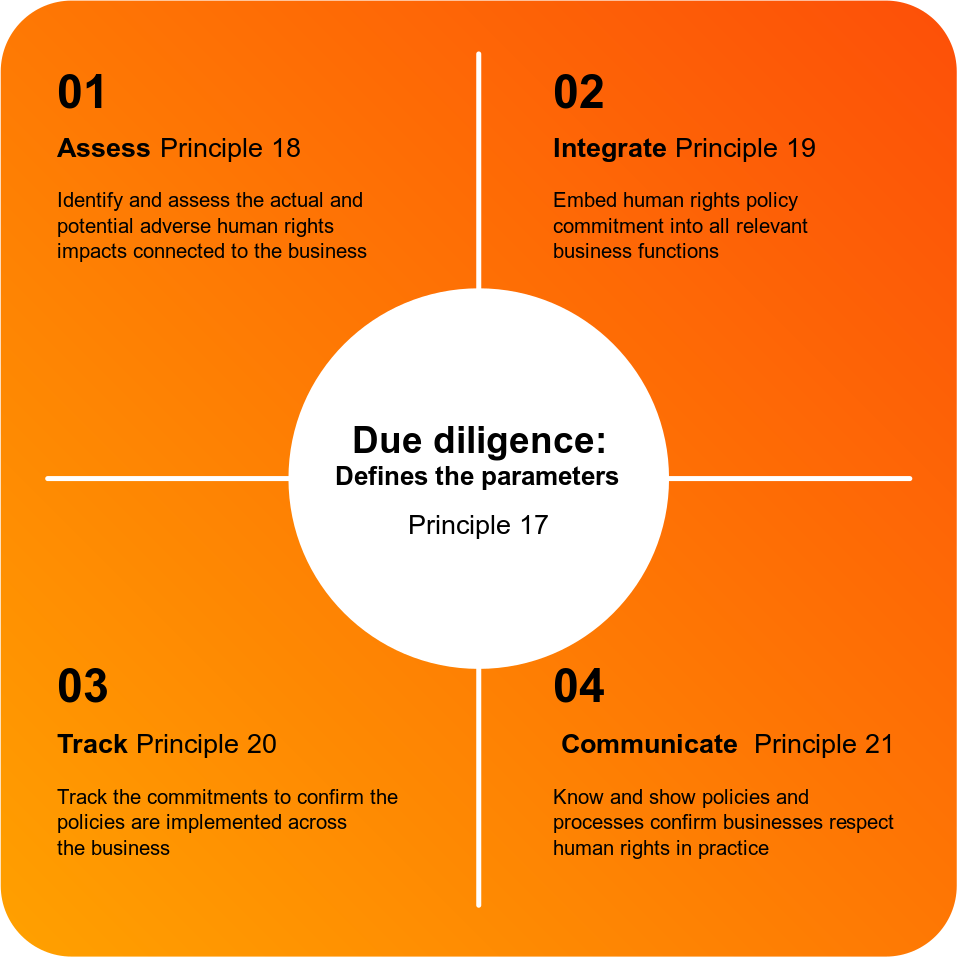Respect for human rights is rapidly rising up corporate agendas, in response to increased vigilance from governments, regulators, customers and investors.
So far in 2023, US Customs and Border Protection have seized close to US $1 billion worth of products over suspected ties to forced, bonded or child labour based on the US Tariff Act of 1930 (19 USC 1307).1 At the same time, the European Union (EU) is making progress towards its Corporate Sustainability Due Diligence Directive which is intended to align with the European Corporate Sustainability Reporting Directive (CSRD) and expand reporting and due diligence standards to require “identifying, bringing to an end, preventing, mitigating and accounting for negative human rights and environmental impacts in the company’s own operations, their subsidiaries and their value chains”.2 Meanwhile a Forced Labour Directive – which would prohibit products being made using forced labour, including child labour, in the EU’s internal market, has also been brought to the table.3 Other notable global movements include:
Switzerland's Conflict Minerals and Child Labor Due Diligence Legislation has entered into force,4
the Norwegian Transparency Act requiring supply chain human rights due diligence and transparency,5
China Chamber of Commerce of Metals, Minerals and Chemical Importers & Exporters worked with the Organization for Economic Co-operation and Development (OECD) to launch its Due Diligence Guidelines for Responsible Mineral Supply Chains,6
in Japan, the Ministry of Economy, Trade and Industry has published guidelines to help companies examine their supply chains for human rights and forced labour issues,7
Australia’s modern slavery legislation, building on the example of the UK Modern Slavery Act, is driving awareness about corporate actions to combat modern slavery,
New Zealand has announced the drafting of a new modern slavery registry law,8
- the Canadian Parliament recently passed Bill S-211- the Fighting Against Forced Labour and Child Labour in Supply Chains Act.9
In short, corporate human rights due diligence (HRDD) has arrived.
What does HRDD mean for your organisation?
Companies are increasingly expected to understand, report on, and take steps to prevent actual, and potential, human rights impacts and modern slavery violations in their global supply chains. This direction of travel is partly due to changing regulatory environments. It’s also a reaction to shifting customer and other stakeholder expectations, and the rapid integration of HRDD into ratings, reporting and shareholder engagements.
The message – increasingly loud and clear – is this: businesses must invest now to identify and manage human rights risks in their operations and supply chains, so that they’re able to address them, avoid doing harm to people, and protect their reputation and right to operate.
Failure to act heightens the risks of penalties for companies, such as fines, financial sanctions, exclusions from investor portfolios, exclusion from markets, legal action and reputational damage. More broadly, widespread non-compliance across a business community could have implications for a territory’s market access to countries and regions that have established human rights regulatory and reporting regimes.
Let's understand the picture in Asia Pacific and then examine what steps organisations can take.
Why does HRDD and modern slavery matter to Asia Pacific businesses?
All organisations should safeguard human rights in their operations and supply chains, but supply chains in the Asia Pacific have particular vulnerabilities. This is because the region accounts for 43% of the global general manufactured goods market10 (the second-largest region, Western Europe, accounts for 23%), while 80% of employment in the Asia Pacific is in low-to-medium skilled work.11 There is also a significant rebound in new migrant workers in Asia from 1.8 million in 2020 to 2.2 million in 2021 and 4.6 million in 2022, according to the Asian Development Bank Institute, the OECD and the International Labor Organization.12 Migrant labour, particularly trans-national migration, when combined with low skilled jobs is a high-risk factor for human rights issues including bonded and forced labour.
Add to this picture a shifting supply chain world - where access to labour due to demographics, rising costs, and other reasons is impacting supply chains13 - while political tensions and economic decoupling are also driving change. Then consider the fact that climate impacts and adaptation risks (already being felt and set to increase significantly in certain key export locations) are also having implications for workers, employers and multinational supply chains.14
Clearly, supply chains are shifting. And as they continue to shift, it will be an ongoing challenge to understand and manage the human rights impacts, risks and opportunities.
In response, Asia Pacific business leaders should determine how the legal, reporting and due diligence changes will impact their operations (including their supply chains and their broader value chain) and where these requirements impact their customers. And they must understand any requirements that stem from multinational supply chains.
Asia Pacific business leaders should prepare for both due diligence and reporting requirements. These preparations should start now.
“Japanese companies are increasingly examining their global supply chains for human rights and forced labour issues, typically being driven by global regulations such as The European Commission Corporate Sustainability Due Diligence Directive.”
Kiyoshi Wakai,Director, ESG Risk Management, PwC JapanHow to get started
As outlined in the introduction, legal requirements to identify and prevent human rights violations are increasing and becoming more specific. Where should a company start? Both the UN Guiding Principles on Business and Human Rights15 and the OECD Guidelines for Multinational Enterprises on Responsible Business Conduct16 (which are the basis for much human rights legislation), outline the need to take a risk-based approach.
How can this risk-based approach be started? Well, just recently, the European Financial Reporting Advisory Group secretariat17 published draft guidance for the value chain. This guidance clearly outlines the need for a materiality assessment to identify the material impacts, risks and opportunities (IROs) across the value chain; with the materiality assessment itself and the value chain IROs becoming part of the CSRD disclosure process.18 Hence the risk-based approach enables IRO identification and links back to corporate reporting about a company’s value chain engagement.
How to manage human rights risks in your supply chain
Incorporating a human rights and modern slavery focus into your business operations and value chains requires understanding, strategy, and intentionality. Supply chains are often complex, distributed and deep. The human rights risks encountered across them are varied based on industry, geography and where in the value chain they are located.
The value of a risk-based approach is to focus resources and attention where they can be of greatest effectiveness and of greatest need. As we identify the high-risk areas and focus attention there, we need to understand and engage on the actual impacts, risks and opportunities, and understand and engage the populations most at risk. These IROs should be explored through an assessment to understand the scope, scale and irremediability of the actual and potential impacts of the risks and opportunities on the rights-holders (particularly those most vulnerable and most affected). Clearly, engaging the potentially impacted populations themselves is key to a robust understanding and impact assessment.
This work allows businesses to prioritise key real-world actual and potential impacts, integrate controls into management systems, identify the root cause of the impact, and seek leverage where necessary. That allows businesses to drive change over time, remediate where appropriate, and track and communicate progress to stakeholders.
Practically speaking, organisations must assess, integrate, track and communicate. Let’s look at each of these in turn.
UN Guiding Principles (UNGPs) on Business and Human Rights23

Source: PwC
“Australia's Modern Slavery reporting requirements are increasingly leading to questions on corporate human rights due diligence.” Sustainability Due Diligence Directive.”
Louise Halliwell,Director, Sustainability Assurance, PwC AustraliaFour high-impact steps to strengthen your due diligence
1. Assess
“Identify and assess the actual and potential adverse human rights impacts connected to the business”.19
- Build the mindset, understanding and buy-in to support the process: Gauging the impact of your supply chain on human rights requires a mindset shift in your organisation. Namely a focus on understanding, ongoing learning and stakeholder engagement.
- Analyse the risks: Do your due diligence homework and get a full picture of both the actual and potential risks across your supply chain and in key risk hotspots. Understand how processes and controls (both within your organisation and within your suppliers) can manage inherent risks and reduce residual risks and impacts of modern slavery and human rights issues.
- Identify gaps and focus areas: Identify the gaps in your systems and processes, and consider how you can directly rectify these (if they are caused by your company), or work with key stakeholders and supply chain partners (where leverage is necessary to mitigate issues your company contributes to or is linked to).
2. Integrate
“Enterprises should integrate the findings from their impact assessments across relevant internal functions and processes, and take appropriate action”.20
Set strategy and intentionality: Respect for human rights should be integrated in your corporate strategy and purpose – and not just driven by regulators and stakeholders. There should be a clear tone from the top with internal and public messaging reflecting the steps you intend to take.
Integration with your operations: To deliver impact you need to move beyond mere human rights commitments towards an integration of your HRDD strategy across your operations. A variety of corporate functions can support your HRDD strategy (including procurement, internal audit, human resources, technology, finance and others). The governance of HRDD processes will be important for oversight, learning and resource allocation. Consider creating an internal HRDD centre of excellence - drawing knowledge from across the business and enabling external engagement. Importantly, non-traditional partnerships (e.g. collaborations with NGOs, business groups, development organisations and others) may be a focus - particularly when working on difficult, complex issues deeper in your supply chain.
3. Track
“Business enterprises should track the effectiveness of their response”.21
Build impact-driven data: Data around the employment and working environment in supply chains is crucial. Use digital solutions to get the best possible data, and then use this data to track progress, measure impact, increase transparency, and communicate progress. That way you can foster accountability, aid recalibration, and promote open dialogues with stakeholders.
- Enable stakeholder inclusion: Quantitative and qualitative data both have their place - and the inclusion of the voice of impacted rights-holders in the measurement and evaluation processes will enhance legitimacy and enable solutions.
4. Communicate
“In order to account for how they address their human rights impacts, business enterprises should be prepared to communicate this externally”.22
Integrate into global reports: Include your supply chain human rights engagements in your global reporting programs in a way that a) meets reporting needs and b) accurately reflects your progress and challenges.
- Communicate locally: By communicating locally you can foster accountability, aid recalibration, and promote open dialogues with stakeholders.
To learn more about these recommendations see the UN Guiding Principles on Business and Human Rights (Principle 17 ~ 21 in particular. See the footnote below).23
The upsides: Why business should be proactive on HRDD
The business case for taking a proactive approach to HRDD is a strong one. By combining the aforementioned steps (i.e. assess, integrate, track, and communicate), businesses can create resilient supply chains and strengthen supply chain partners. This, in turn, decreases risk, increases innovation, allows for tax and regulatory optimisation, and enhances reputation.
Meanwhile, focusing on inputs and resource efficiency, as well as talent and human capital, can boost margins. Integrating sustainability into your brand or product can present opportunities for market differentiation, putting your business in prime position to meet the evolving expectations of your customers and investors.
Overall, businesses are facing more questions than ever before around their direct and indirect impacts on human rights. The answer, therefore, is to implement a robust HRDD program to identify, manage and monitor the human rights risks in your operations and supply chains; then use it to integrate ever better practices across the business, to track and communicate performance.

















